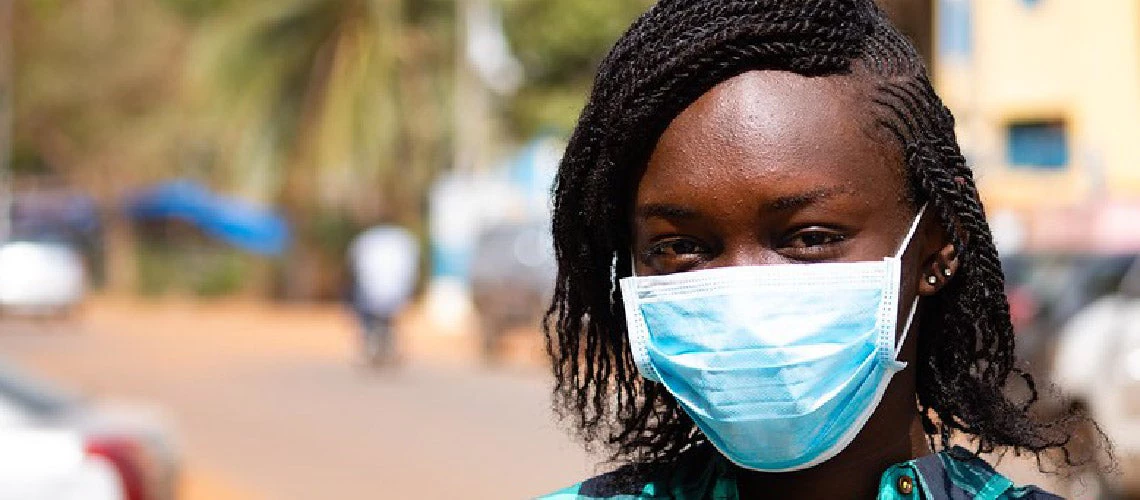 Photo: World Bank / Ousmane Traore
Photo: World Bank / Ousmane Traore
Equal access to identification is key for women to fully participate in the economy. This is true now more than ever, as countries around the world are looking for solutions to mitigate the disruptive effects of the coronavirus/COVID-19. Countries with trusted and fully inclusive identification systems will be better equipped to disburse relief payments quickly and securely. Providing individual payments on the basis of a comprehensive, nationwide registry of all individuals can speed up their disbursement and ensure that they reach the intended beneficiaries. For example, India uses digital infrastructure that is accessible for individuals – many of them women – via their national registration numbers to expense cash transfers.
Women, Business and the Law (WBL) has recently published data on legal and regulatory barriers for women when obtaining national identification. WBL shows that some countries have removed such legal barriers over the past two years. For example, Afghanistan and Mauritius made access to identification documents easier for women by equalizing procedures for married men and women. Formerly in Mauritius, married women had to show a marriage certificate when applying for a national ID card, while married men did not. And the updated registration forms for the Afghan electronic national ID card no longer require a married woman to provide her husband’s name when applying for the card. Previously, WBL has highlighted the case of Senegal, where the overhaul of registration procedures when introducing an electronic system benefitted women by removing gender differences in the application process. However, according to new WBL data, in nine economies around the world, women still face legal obstacles when applying for a national ID card. For example, in Benin and Namibia, a married woman must present a copy of her marriage certificate when applying for a national ID card, while the same is not required for married men. In Egypt, the ID card of a married woman includes the name of her husband, while a man’s card simply indicates his marital status. In Oman, it is optional for women to have an ID card, while it is obligatory for men.
Unequal access to identification limits women’s economic opportunities even when life is not disrupted by a global health pandemic. Proof of identity is necessary, for example, to sign an employment contract, open a bank account, or borrow from a financial institution. Lack of identification has been linked to statelessness and serious human rights violations, including child labor, early conscription into the armed forces, and child marriage. The gender gap for the unregistered population has been found to be particularly large in low-income countries where it can correlate with legal barriers.
WBL data also shows that access to identification is important for women’s financial inclusion. In economies where women can obtain identification documents in the same way as men, they are more likely to apply for loans. Access to finance is crucial for women entrepreneurs to start a business and keep it running, not only during but also after a global crisis.
WOMEN ARE LESS LIKELY TO BORROW FROM A FINANCIAL INSTITUTION WHERE PROCESSES FOR GETTING NATIONAL IDENTITY CARDS DIFFER BY GENDER:
Source: Women, Business and the Law, Global Findex, and World Development Indicators databases
Note: The positive relationship between the percentage of females (age 15+) who borrowed from a financial institution and the legal ability of a woman to apply for a national identity card in the same way as a man is statistically significant at the 1% level after controlling for 2017 GNI per capita. The regression analysis is based on 125 economies for which data are available, 8 of those having gender-based differences when obtaining a national identity card. The regression results remain statistically significant at the 5% level even after controlling for the proportion of seats held by women in national parliaments (2019) and the ratio of female to male enrollment in tertiary education (2017). This statistical relationship should not be interpreted as causal.
Removing legal barriers to obtaining identification is of course only one important step towards increasing women’s ID coverage. Policy action should follow to encourage women’s registration. For example, opening women-only registration counters has been shown effective in boosting application numbers and could be replicated in other economies. Likewise, mobile registration services that bring enrollment closer to women’s homes can help reduce the transport and opportunity cost of registration. Creating tailored messaging on the benefits of identification and providing special incentives, such as conditional cash transfers given to female heads of household can also support women’s registration. What other initiatives do you know that can help close the gender identification gap?



Join the Conversation